Siege of Mariupol
Putin announced his decision to stop further assaults on Azovstal: the last remaining Ukrainian stronghold in Mariupol. Siege of Mariupol started on Feb 25, by March 3 the city was completely surrounded. Two months later its defenders still stand their ground🧵
Putin announced his decision to stop further assaults on Azovstal: the last remaining Ukrainian stronghold in Mariupol. Siege of Mariupol started on Feb 25, by March 3 the city was completely surrounded. Two months later its defenders still stand their ground🧵

Mariupol is a city on the Azove Sea shore. It is located about 50 km from the Russian border (grey). Since the start of the war 2014, it has been a frontline city. No wonder that with the full-scale Z-invasion it was surrounded almost immediately and now is in deep Russian rear 

Mariupol was founded by the Crimean Christians deported by Russia in 1770s. Deportation of Christians from Crimea received surprisingly little international coverage. So let's discuss it. Until XVIII century Muslim Tatar Crimean Khanate was a vassal state of the Ottoman Empire 

Crimean Khanate is a misunderstood polity often viewed almost as an Ottoman province. And yet, although they used Ottoman language & terminology in their administration, in practice their legal, political, institutional norms were different: more Golden Horde-ish than Ottomanish 

Theoretically both the Ottomans and the Crimea were monarchies. In practice however Crimea was a military democracy with tons of constitutional checks on the monarchic power. Meanwhile, institutional structure of the Ottoman Empire was designed in order to maximise the said power 

That doesn't mean that Crimea was more "progressive" than the Ottomans. It was probably the other way around. Crimea was a Turkic steppe state which didn't became a great empire and where traditions of tribal democracy were not systematically dismantled by the emerging monarchy 

Paradoxically it may sound, constitutional character of Crimea means it was more archaic. That may sound strange for modern Anglos but their forefathers would find it logical. Which is obvious if you scroll through debates of the English Civil War era on the Ancient Constitution 

Being so archaic, Crimean Khanate was very diverse. Ruling class was Tatar (=Kipchak Turkic). But there also lived Greeks, Armenians, Jews, etc. According to Jacob Ziegler, it was the last place where the Gothic language, dead elsewhere, was still spoken in the late Middle Ages 

Ethnic situation in Crimea could be illustrated by an Armeno-Kipchak language. Crimean Armenians forgot their tongue and switched to the Kipchak. However, they continued to write it with Armenian letters. First printed Turkic books ever were written in a now dead Armeno-Kipchak 

After centuries of Russian-Crimean wars, Crimea (and their Ottoman suzerains) were defeated. In 1774 Catherine II imposed a peace treaty which proclaimed Crimean Khanate to be a sovereign state, free from any foreign (=Ottoman) authority. It was occupied by the Russian army 

Peace treaty of 1774 determined that all Christian captives and slaves living in Crimea had to be liberated and returned to Russia. And yet it didn't specify: whom exactly do we consider a captive or slave? Russian authorities argued that all Christians in Crimea were captives 

Russian Empire traditionally weaponised abolitionist narrative to justify its expansion. Сourt poet Kheraskov wrote a poem on a war against Crimea:
"We have to go there
Because of the hardship of our kin,
Having the same law [=religion] as us,
They are in heavy chains there"
"We have to go there
Because of the hardship of our kin,
Having the same law [=religion] as us,
They are in heavy chains there"

The war against Crimea was waged in order to liberate Crimean Christians from their captivity. It was more of a humanitarian operation than a war of aggression. In 1774 Crimean Christians received a chance to leave their chains and go home. But almost nobody used this opportunity 

For four years Russian Empire waited for the mass exodus of Christians from Crimea. In 1778 the patience was over and Alexander Suvorov was charged with evacuating Christians to Russia
A flood of complaints on Suvorov who used violence to make Christians leave, followed soon
A flood of complaints on Suvorov who used violence to make Christians leave, followed soon

Reading all these complaints, Rumyantsev prohibited Suvorov to use violence "so that no Cossack would not chase anyone with a whip"
"This order was issued after the Christian deportation was over. Otherwise, I would be destroyed for failing the operation" recalled Suvorov
"This order was issued after the Christian deportation was over. Otherwise, I would be destroyed for failing the operation" recalled Suvorov

Indeed, by May 1768 the Christian deportation was over. How did they react? Some tried to hide in the mountains. Others converted to Islam to avoid being liberated. Paradoxically, Russian conquest of Crimea led to the mass Islamization and Turkification (much like on Volga) 

Until Rumyantsev prohibited Suvorov to use violence more than 30 000 of Greeks, Armenians, Georgians and others had been deported. By the end of 1779 they settled on the Azov Sea shore and founded 19 new villages named after their Crimean homes: Yalta, Mangush, Old Crimea, etc 

The main settlement of this new deportees colony was the city of Marienpol, whose initial coat of arms consisted of a cross and a crescent thus manifesting a triumph of Christianity over Islam. In 1780 Marienpol was renamed to Mariupol after a wife of the heir to the throne 

(will continue in a few hours)
Area around the modern Mariupol was very sparsely populated back then. Why? Well, because it is the Eurasian Steppe. It stands exactly on the ancient nomadic migration route leading from the Inner Asia to Europe. Those who tried to settle would be wiped out by new incoming waves 

The factor of the Eurasian steppe corridor shaped Ukrainian history. That's how Ukrainian electoral maps used to look like till 2014. This dichotomy is often described as West vs East or Ukrainian vs Russian speakers. I would suggest another concept: Old Country vs New Country 

Old Ukraine (North and West) is an area of very old agrarian settlement. New Ukraine (South and East) is a part of the Eurasian Steppe Corridor which was settled en masse only in the 18-19th cc. Previous settlements e.g. under Golden Horde were destroyed by other steppe forces 

Old Ukraine is a country of deep-rooted agrarian and urban civilisation. New Ukraine is basically the North America. It's a very new settler society which was formed by the mass colonisation of steppes in 18-19th cc. Unlike the West it has little (continuous) history or tradition 

That gives an answer to the question I've been asked so often. Aren't East Ukrainians basically Russian? Historically New Ukraine was settled by everyone, much like North America. Settlers from Central Ukraine, like Poltava or Chernihiv made the largest demographic group there 

Why would settlers from the Old Ukraine leave to the New one? Largely due to the demographic pressure. By 19th c Old Ukraine suffered from huge agrarian overpopulation. So Central Ukrainians settled not only the New Ukraine, but much of southern Russia all the way to the Pacific 

Consider this ethnic map of USSR, 1941. Area of Ukrainian demographic majority (orange) goes far beyond the current Ukrainian border. It covers Krasnodar (encircled), and many settlements along the Trans-Siberian railway all the way to Vladivostok 

As a result of 18-20th cc Ukrainian Expansion, Russia now has quite a lot of descendants of Ukrainians. They are especially overrepresented in southern Black Sea regions (such as Krasnodar) and in the Far East. That might explain the prejudice of other Russians against Krasnodar 

Of all the Russian regions, public image of Krasnodar, whose people are mocked as Kubanoids (Kuban being the main river there) is especially unsympathetic. Judging from Russian social media, mass attitude towards Krasnodar might have an element of ethnic prejudice 

Ukrainian heritage in South (around Krasnodar) and in the Far East (Primorskii, Khabarovskii Krais) may be an important factor when predicting the future of Russia. Russia has three main doors to the World Ocean (red) and two of these regions are heavily Ukrainian by origin 

Now let's return to the New Ukraine. Ukrainian East such as Donbass was settled by a wide variety of people much like North America. Initial settlers of Mariupol for example were Crimean Christians deported from Crimea by the Russian Empire. Soon they were outnumbered by Slavs 

Let me illustrate the diverse origins of Donbass by the following example. Two main urban centres of the region - Donetsk and Luhansk - were both founded by the British industrialists: Charles Gascoigne and John Hughes 

Luhansk was built by Charles Gascoigne, who revolutionised the naval warfare by introducing the carronades. He also revolutionised the Russian metallurgy. Previously it worked only on charcoal. Gascoigne looked for coal deposits and found them near modern Luhansk 

Donetsk was built by a Welsh industrialist John Hughes who moved to Donbass with his own equipment, technologies and workers - mostly his compatriots from the South Wales. A settlement they established was named after him Yuzovka and after revolution was renamed to Donetsk 

Gascoigne-Hughes story illustrates the history of Donbass. It isn't an old country. It's a part of the Eurasian Corridor colonised much like North America in the same era by a wide variety of people. Its real demographic & economic boom started only with the Industrial Revolution 

Once the industrialisation commenced, Donbass region had nearly American rates of growth. In 1850 Mariupol was just a small market town. By 1900 it was an industrial powerhouse and a major seaport, controlling much of Donbass exports 

Revolution and the Civil War was a major blow on Mariupol. Most of industry belonged to the Westerners. Communists nationalised it ofc, but the technological chains were disrupted and production dropped dramatically. Only in the late 1920s USSR started industrialising again 

It might seem that Stalin's industrialisation had nothing in common with previous one. In the past it was driven by the private initiative, now by the state. In the past enterprises had to be profitable, Stalin argued that a socialist enterprise absolutely can operate at loss 

In one important respect however, Stalin's industrialisation was a copy of the Imperial one. Both Russian Imperial and Soviet propaganda wouldn't shut up about a struggle against the corrupt West, while in fact their economy fully relied on Western assistance and supervision 

Imperial and Stalin's regime were similar in their full technological and organisational reliance on the West. This parallel is especially obvious is we consider the history of Azovstal plant, location of probably the hardest battle of this war. I'll make a pause, to be continued
Imperial splendour of the Russian Empire hides its technological dependence. Consider the following. St Petersburg, the capital of the empire was founded in 1703 in the mouth of Neva river. And yet, till mid XIX century it didn't have a single permanent bridge, only pontoon ones 

St Petersburg was not only a political, but also a logistic centre. When it was founded in 1703, it was the only Russian non-Arctic seaport giving access to the World Ocean. Delta of Neva divided it into a number of poorly connected areas without a single permanent bridge 

The first permanent bridge through Neva - Annunciation Bridge (Благовещенский bridge) was built in 1843-1850 by a West Point grad George Washington Whistler. This American engineer moved to Russia and helped massively in Russian bridge & railways construction 
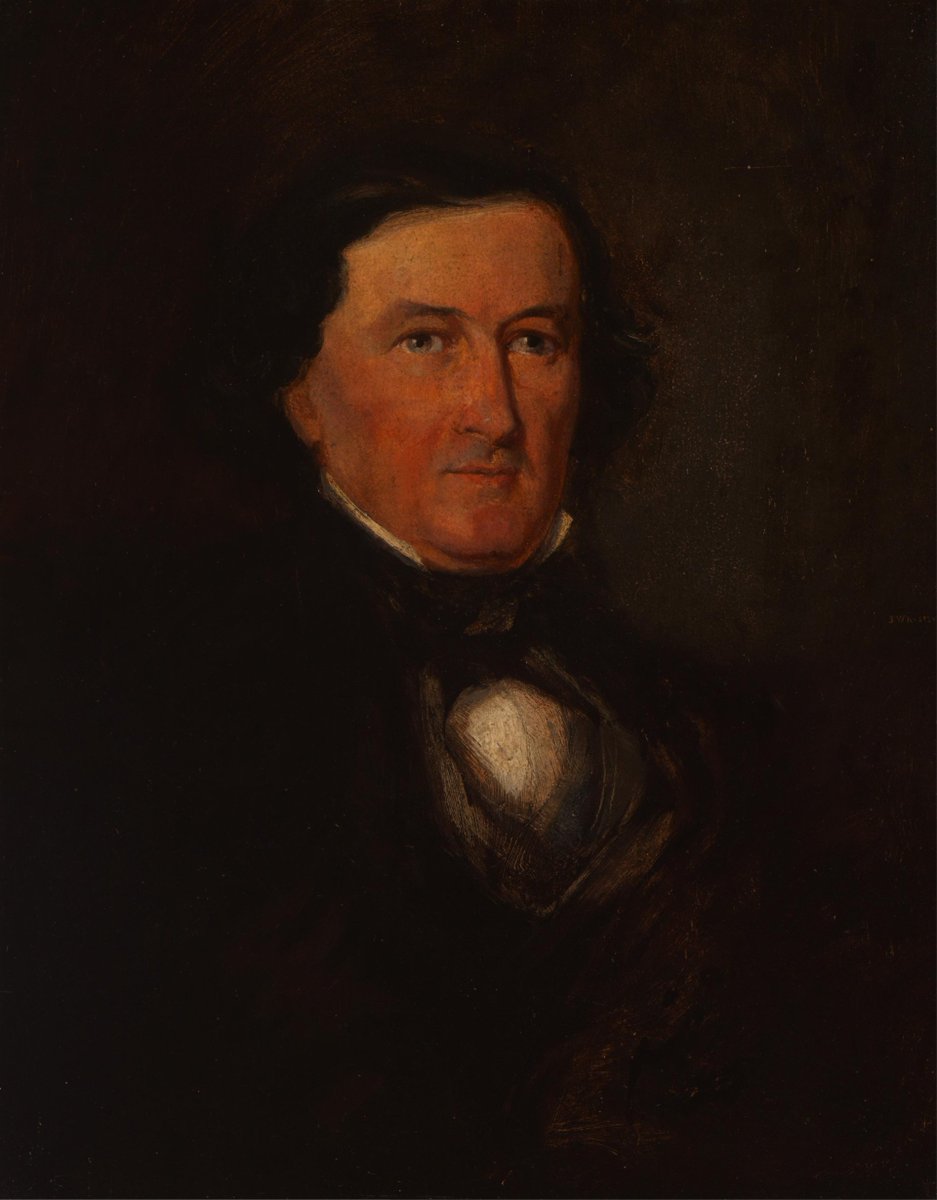
Whistler's help was vital because he belonged to a superior technological and industrial culture. He didn't need to invent a wheel. He just brought to Russia the American way of doing things. Consider the construction of the first major railroad in Russia: Moscow - St Petersburg 

Such project involved many technical problems, such as building 190 bridges of various size. Fortunately, Whistler brought a design of Howe truss. This American solution was used in every single bridge on Moscow-Petersburg road and more than 50 years later on Trans-Siberian one 

Russian Empire can look very and menacing. And yet, it's not self-sufficient. It's a semi-periphery empire which can't produce technological or organisational solutions. It can only import them from the core. That was the case for the Tsars, for Stalin, and ofc is the case now 

Let me reiterate my point. Periphery and semi-periphery absolutely can develop. But they develop by importing *ready* solutions from the core. They don't import elements of a system, they import entire systems from the core with the core assistance and the core supervision 

You may raise an objection: ok, you brought up the world-system model in conversation about Russia. But why did you bring up this specific model and not another? Isn't your choice arbitrary?
My answer would be: I use world-system model because it demonstrated predictive power
My answer would be: I use world-system model because it demonstrated predictive power
Consider a Wallerstein's speech read to the startled Russian audience in 1995:
Your next presidents will bear epaulets. You can't have anything else. You'll resume the Cold War with America because you are a semi-periphery country specialised on creating new conflicts
Your next presidents will bear epaulets. You can't have anything else. You'll resume the Cold War with America because you are a semi-periphery country specialised on creating new conflicts
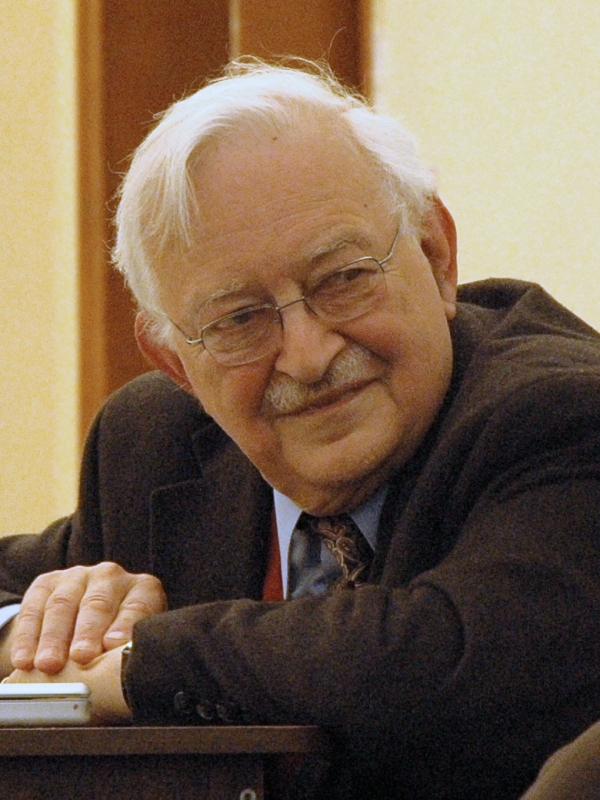
Now we see that Wallerstein was right. But may be he was right accidentally? I don't think so. Factors that determined this kind of future were systemic rather than accidental. Consider that all three last PMs of Yeltsin: Primakov, Stepashin and Putin were intelligence officers 

It's not that Yeltsin accidentally chose a KGB guy as his heir. It's that all the candidates he would even consider were from the state security. The difference between Primakov and Putin is that the former tried to escalate the Cold War even *before* becoming the President 

Foreigners perceive Putin as irrational. From the Russian perspective though, his behaviour looks very rational, cautious, reserved. First get the supreme power, *then* escalate international conflicts. His predecessor might have failed because he did it the other way around 

I think that Wallerstein correctly saw a systemic path of a semi-periphery empire specialised on creating conflicts and whose rulers will bear the epaulets. That's a constant of the Russian history that has nothing to do with a specific regime or a ruler 

As Alexander II told:
"Russia is neither a merchant, nor agricultural state and its destiny is to be the menace [гроза] of the world"
Whom do you see here? I see a guy in epaulets who specialises on creating conflicts. That's not an accident. That's the Wallerstein Constant
"Russia is neither a merchant, nor agricultural state and its destiny is to be the menace [гроза] of the world"
Whom do you see here? I see a guy in epaulets who specialises on creating conflicts. That's not an accident. That's the Wallerstein Constant

PS Wallerstein is dead but his PhD student Derluguian is very much alive. Back in the USSR his thesis on Mozambique Communist propaganda vocab was prohibited by the Central Committee. After moving to the US he focused on Caucasus and produced my favorite works on that region 

Let's sum up. Russia has always been and currently is a semi-periphery empire which specialises in creating conflicts and is unable to build a bridge without massive foreign help and supervision. It can only import ready solutions from the core. That's the Wallerstein Constant 

Wallerstein Constant regarding the import of *ready* solutions from the core is very obvious if we consider the history of Mariupol. By 1900 it was an important logistical and industrial centre. It had two large Steel mills: American and Belgian one. Here you see a Belgian plant 

When Russian engineer Pavlov visited the American plant in Mariupol, he noticed a strange pink color of the furnace bricks:
- Where does it come from?
- From the US
- But we could've bought much better and cheaper German bricks
- Yes, but our managers don't trust German bricks
- Where does it come from?
- From the US
- But we could've bought much better and cheaper German bricks
- Yes, but our managers don't trust German bricks

Indeed, Julian Kennedy who oversaw the construction of this steel mill, didn't trust German bricks. So he shipped all of the equipment from the bricks to the rivets from America. That illustrates the tendency to import *ready* solutions from the core to the periphery 

Notice that a Russian engineer didn't question the use of foreign equipment per se. Should we use German or American stuff? That's what was on the table. Russians advocated for the German, but it didn't matter. Foreign supervisors imported ready solutions and wouldn't experiment 

In the Belle Époque Russian economy was driven primarily by the private initiative. German, Belgian, American, etc companies competed with each other (more or less) freely. After 1917 that changed and the free competition was eliminated. But the Wallerstein Constant wasn't 

I'm making a pause, will continue in a few hours
Communist revolution temporarily closed Russia for the foreign businesses. Private companies, whether domestic or foreign, were nationalised and foreign investors/experts mostly had to evacuate. That doesn't mean however that the USSR was autarkic. Not at all 

Lenin had a love-hate relationship with American capitalism. Consider his 1914 article "Taylor's system: Enslavement of a human by a machine". American scientific management was inhumane. And yet, it prepared economy for a takeover by the even scientific socialist management 

Yes, scientific management is brutal. But once society accepted it, it accepted the idea that an enterprise can and should be reorganised according to a rational plan. Which paves a way for a next iteration when the entire society will be reorganised according to a rational plan 
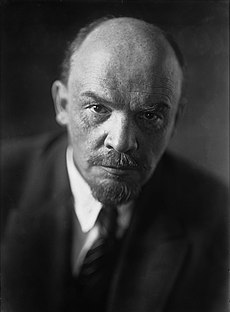
Taylorism and other core capitalist practices were just the first stages of rationalisation and centralisation of the industrial production. This centralisation&rationalisation process would culminate in building a centrally planned socialist economy. Isn't that great? 

And yet, Lenin's plan didn't work out. Yes, Bolsheviks took over Russia, but they didn't want to take over Russia. They wanted to take over the capitalist core of the world. Immediately upon consolidating their power in Russia they launched an expedition westward. It failed 

Communists intended to take over the industrial powerhouses of the West which, according to their theory, were advanced enough for the next stage of development - socialism. But they took over a backward country which according to the same theory was totally unprepared for it 

In terms of the world-system theory, Bolsheviks intended to take over the core, but they took over the semi-periphery. And Vladimir Lenin understood it better than anyone else. He refused to call the Bolshevik revolution or the Soviet economy "socialist". They were capitalist 

In 1921 Lenin argued:
"We completed a bourgeois-democratic revolution better than anyone else. We will consciously, firmly and implacably move forward to the socialist revolution"
According to Lenin 1917 wasn't a socialist revolution and USSR wasn't a socialist state
"We completed a bourgeois-democratic revolution better than anyone else. We will consciously, firmly and implacably move forward to the socialist revolution"
According to Lenin 1917 wasn't a socialist revolution and USSR wasn't a socialist state

Lenin's refusal to characterise his revolution or his state as "socialist" makes total sense if we assume that he was a smart and genuine believer. According to his theory you couldn't jump through a stage of development. Thus backward Russia couldn't become socialist overnight 

But if Communist Russia wasn't socialist, then what have we built by nationalising businesses and establishing state control over the economy? Well, state capitalism ofc. As long as Lenin was alive official doctrine claimed Russia had state capitalism with some socialist elements 

That's why Lenin allowed commerce in 1921 - a decision was so widely hated within the Communist Party. I think that Stalin's takeover of power can be better understood if we interpret the inner politics of the Communist party in Gaetano Mosca's terms. But I'll cover it next time 

But if we have the state capitalism here in the USSR, then we should act as capitalists, shouldn't we? And if we act as capitalists, then we should emulate the best capitalist practices. And where can we find the best capitalist practices? By 1920s the answer was pretty obvious 

I'll continue tomorrow
Unrecognised Soviet Russia needed proxies to trade with the West. The All Russian Cooperative Society Limited (Arcos) founded in London in 1920 as a British company operating under the British Law and led by Leonid Krasin controlled nearly all Soviet import and much of export 

Krasin was one of patriarchs of the Bolshevik party. Like Lenin he was kicked out from the uni for his revolutionary activities, spent time in prison and in exile. Unlike Lenin however, Krasin finished his education and received an engineering degree from the Harkiv university 

Krasin led a double life. On the one hand he was a successful engineer and industrial manager. He was a deputy chief of Siemens AG office in Berlin and then in Moscow. On the other hand he was a revolutionary cooped to the Central Committee of the Party in Brussels in 1903 

Krasin was largely responsible for funding the Bolsheviks. He was accused of murdering his ex-patron Savva Morozov. As a result of family conflict tycoon Morozov lost control over his industrial empire and couldn't fund the Bolsheviks anymore. Still, his life could be insured 

Bolshevik actress Andreeva (left) had an affair with ex-tycoon Morozov (right). Reportedly she persuaded him to insure his life for 100 000 rubles, so she wouldn't suffer from poverty. Then Krasin murdered Morozov and she collected the cheque. Morozov's wife tried to sue but lost 



Do we have the evidence that it were the Bolsheviks who killed Morozov? Not really. But we have the evidence that:
- They couldn't milk him anymore
- His life was insured
- ndreeva collected the paycheck
- She and her lover Gorky funded the Party school on Capri Island for years
- They couldn't milk him anymore
- His life was insured
- ndreeva collected the paycheck
- She and her lover Gorky funded the Party school on Capri Island for years

After the revolution Krasin was charged with organising the supplies of the Red Army. Then he left to Europe as a de facto economic&financial representative of Lenin. In 1920 he incorporated the Arcos company in London and settled there to organise Soviet imports and exports 

Unfortunately, by the 1920s the UK wasn't the workshop of the world anymore. The US took that role. In order to trade with the US, Soviets created a number of proxies of proxies such as the Arcos America company. In 1924 those proxies were merged to form the Amtorg 

Amtorg was also an American company operating under the American law, but totally controlled by the Soviet government. And it was *the* key agency for organising the Soviet industrialisation. In 1927 Stalin appointed this Odessa-born, Zurich-trained economist as the CEO of Amtorg 

As the Amtorg CEO Saul Bron approached the Detroit industrial architect Albert Kahn and commissioned him with organising the Soviet industrialisation. Kahn wouldn't just draw designs, he would organise the entire process. How? By importing ready solutions from America 

Consider the Stalingrad "tractor" (=tank) plant. It was modelled after the International Harvester Milwaukee plant. Stalingrad plant was basically a LEGO with all details and equipment produced in America, shipped to Russia and then assembled under the American supervision 

Magnitogorsk Iron & Steel Works plant, the largest in the USSR, was modelled after the US Steel Mill in Gary, Indiana. It was assembled from the US details under the US managers. In this context description of WWII as the "victory of Magnitogorsk over Ruhr" seems to be very true 

Here you can read a more detailed account of the American involvement in the Soviet industrialisation
https://twitter.com/kamilkazani/status/1505247886908424195It is largely based on Sonia Melnikova-Raich's "The Soviet Problem with Two Unknowns", Parts I and II
Open call. I am now preparing two longreads:
1. On Stalin's industrialization
2. On how Putin built his military industry in 2000-2010s (I made a different name for that article, but I don't want to disclose it now)
So I am looking for an interested media to publish them there
1. On Stalin's industrialization
2. On how Putin built his military industry in 2000-2010s (I made a different name for that article, but I don't want to disclose it now)
So I am looking for an interested media to publish them there
Semi-periphery empires can't industrialise without a direct supervision from the core. Both Imperial and Soviet industrialisations were core-managed. And you can easily track this management and assistance from the core on example of the Mariupol industry 
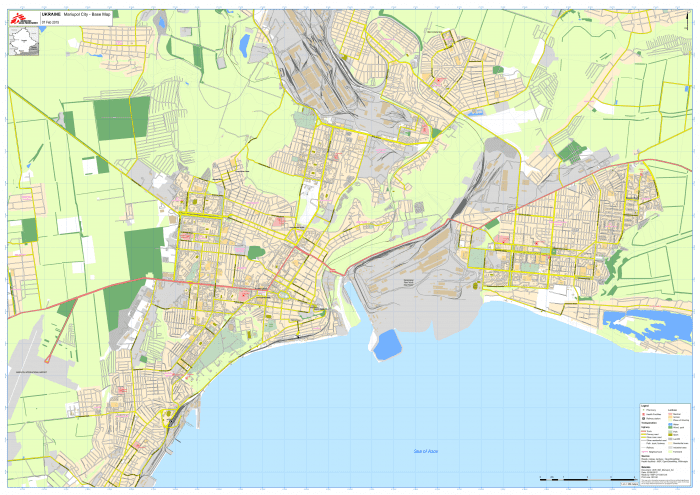
Imperial industry
Illich Steel and Iron Works plant, Mariupol. Illich = patronymic of Lenin. It's the American-build, designed & owned plant that amazed 19th c Russian engineers with a strange colour of its furnace bricks. After 1917 it was nationalised and renamed after Lenin
Illich Steel and Iron Works plant, Mariupol. Illich = patronymic of Lenin. It's the American-build, designed & owned plant that amazed 19th c Russian engineers with a strange colour of its furnace bricks. After 1917 it was nationalised and renamed after Lenin

Soviet industry
Azovstal where may be the hardest battle of the Z-war took place. It's a Soviet plant built in 1930s at the Stalin's orders and ofc planned, designed and supervised by the American contractors commissioned by the Albert Kahn Associates
Azovstal where may be the hardest battle of the Z-war took place. It's a Soviet plant built in 1930s at the Stalin's orders and ofc planned, designed and supervised by the American contractors commissioned by the Albert Kahn Associates

Until 1937 Soviets lowkey admitted it:
"Since 1930 ... Magnitostroy, Uralmashstroy, Azovstal, Zaporozhstal [etc] ... and many other largest Soviet industrial objects were built using American methods"
Николаев И. Советская промышленная архитектура//Архитектура СССР, 1937. № 10
"Since 1930 ... Magnitostroy, Uralmashstroy, Azovstal, Zaporozhstal [etc] ... and many other largest Soviet industrial objects were built using American methods"
Николаев И. Советская промышленная архитектура//Архитектура СССР, 1937. № 10
We know that the political and military leadership of the USSR was massacred in 1937-1938. And yet, what we don't think about is that virtually all of industrial management was slaughtered as well. Nearly everyone who supervised the industrialisation was shot, including Saul Bron 
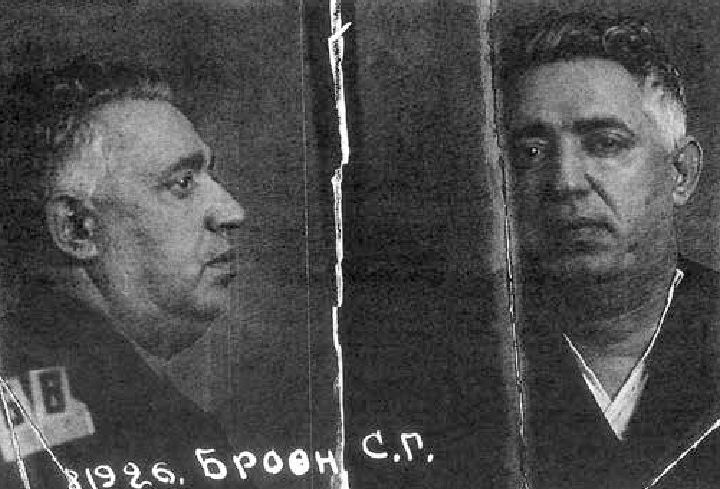
Stalin's decision to massacre his own industrial management was understandable. These guys worked with Americans for years, were taught by them, learnt a lot. Therefore, they could be a tool of American soft power. Best of all, slaughter them all to minimise political risks 

Let's sum up. Russian-Soviet Empire may look very menacing. In fact it *intends* to look menacing. It is a semi-periphery empire run by a guy in the epaulets and specialised on provoking conflicts but unable to build a bridge without supervision. That's the Wallerstein Constant 

It doesn't mean Russia can't develop. It absolutely can. But this development may proceed only in the form of importing the ready solutions from the core. In Stalin's era ready solutions were imported from the US. In Brezhnev's era - from the Western Europe 

Honestly I find this diagram incomplete, because it takes into account only the trade and labour flows. And yet, the core also exports ideas, models, solutions. That's a system of cultural hegemony that goes far beyond the mere "ideology", covering economy and technology as well 

Imperial, Soviet and modern Russia all belong to the semi-periphery. They must import not only equipment, but also ready solutions from the core. Soviets didn't really deny it. Consider this 1979 book on Soviet foreign trade which portrays the USSR as the ready solutions importer 

From the Wallerstein Constant we can infer a rule of thumb. Russia belongs to the semi-periphery. Therefore, if Russia has a complex and functional technological chain, we can make an educated guess that it's functional thanks to a ready solution provided by the core. End of 🧵 

• • •
Missing some Tweet in this thread? You can try to
force a refresh





